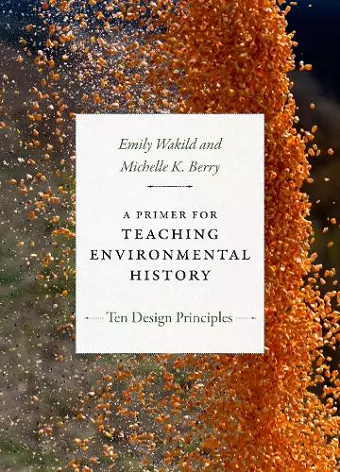A Primer for Teaching Environmental History
Ten Design Principles
Emily Wakild author Michelle K Berry author
Format:Paperback
Publisher:Duke University Press
Published:16th May '18
Should be back in stock very soon

A Primer for Teaching Environmental History is a guide for college and high school teachers who are teaching environmental history for the first time, for experienced teachers who want to reinvigorate their courses, for those who are training future teachers to prepare their own syllabi, and for teachers who want to incorporate environmental history into their world history courses. Emily Wakild and Michelle K. Berry offer design principles for creating syllabi that will help students navigate a wide range of topics, from food, environmental justice, and natural resources to animal-human relations, senses of place, and climate change. In their discussions of learning objectives, assessment, project-based learning, using technology, and syllabus design, Wakild and Berry draw readers into the process of strategically designing courses on environmental history that will challenge students to think critically about one of the most urgent topics of study in the twenty-first century.
"More about possibilities than prescription, A Primer for Teaching Environmental History is one of the most compelling texts on course design I’ve encountered—which is why I will keep it nearby as I revise my own environmental and U.S. history courses." -- Amy Kohout * Western Historical Quarterly *
"Wakild and Berry have accomplished a first. They have published a usable, innovative, and relevant guide to teaching environmental history that should be on every historian’s bookshelf at a time when enrollment trends jeopardize the stability and future of the humanities. From this perspective,Wakild and Berry provide a compelling defense of the profession. Instructors must continue to adapt to the shifting landscape of academia in the twenty-first century. It is only fitting that environmental historians be at the forefront of that effort."
-- Brittany B. Fremion * Environmental History *
"The richness of content and context provided by Wakild and Berry makes it hard to not want to teach a course on environmental history, or at the very least attempt one of the assignments outlined in the book. Still, the book deserves a wider audience than just those who might readily see its appeal and educators from a variety of fields and levels of experience could find ways to adapt the approaches to their lesson plans and goals. It is an excellent starting point for designing a new course or even refreshing the content of an existing one." -- Abbey Lewis * Electronic Green Journal *
"Every environmental historian, or those wishing to inject a little environmental history into their curriculum, should read [this book]. It is a rich and engaging resource for all aspects of environmental history pedagogy. The authors have a wealth of teaching experience and their enthusiasm for their subject is infectious." -- Frank Zelko * Journal of World History *
“This very timely and important book has ideas for almost every kind of educator, and a little environmental history can go a long way. I have recommended it to friends and colleagues who teach in both high schools and colleges, and I recommend it to you now.”
-- Raechel Lutz * H-Environment, H-Net Reviews *"This book has the immense merit of inviting all historians to consider the need to integrate a material and ecological dimension into their teaching." -- Renaud Becot * Review of Agricultural, Food, and Environmental Studies *
ISBN: 9780822371489
Dimensions: unknown
Weight: 295g
200 pages